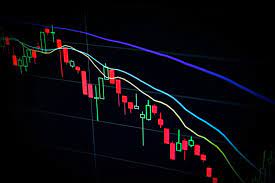How Do You Catch Real-Time Market Data When Trading
So, for swing traders, the free end of day market data that can be found on the Internet is more than enough. Because they enter and leave the market within a few hours and frequently within a few minutes, day traders need real-time intraday data.
Author:James PierceReviewer:Camilo WoodMar 10, 20228.9K Shares595.2K Views

So, for swing traders, the free end of day market data that can be found on the Internet is more than enough. Because they enter and leave the market within a few hours and frequently within a few minutes, day traders need real-time intraday data.
Unfortunately, access to real-time market datais not free. Depending on the sort of market data you use, you may have to pay a monthly charge to your broker or DAS platform. The kind of market data you need depends on the type of trading you do. Trading on the Toronto Stock Exchange (TSX) requires access to real-time data. Because of the enormous volume (liquidity) and volatility of the US markets, traders rely heavily on NASDAQ real-time data. You can't day trade effectively unless you have access to real-time market data.
How To Get Access To Real-Time Market Data
If you're a US trader, get in touch with your broker and request the NASDAQ TotalView Level 2 real-time data feed. Depending on the broker, you may have to pay a monthly charge for your data.
You will have access to NASDAQ Level 2 as part of your data feed subscription. Level 2 may provide key information about a company's price movement, such as the kind of traders that are buying and selling the stock and the direction the stock is expected to go in the near future. Leading indicators are those that signal activity before an actual deal occurs. Level 2 falls under this category. "Lagging" indicators are indicators that offer information after the trades have been made, including moving averages, charts, and so on.
A stock's order book on NASDAQ is known as Level 2. It's common for orders to be made via a number of different market players. A ranked list of the best bid and ask prices from each of these players will be shown in Level 2, providing you a clearer picture of the market's movement. In order to get the most of your day trading, you need know precisely who is interested in a stock.
Aboud Bid And Ask
At all times, the stock market has a bid and an ask price associated with it. What consumers are willing to pay for that stock at the time is known as a bid, and what sellers are willing to ask for it is known as a counter-bid. The spread between the bid and ask prices is known as the bid-ask spread. The gap between the high and low bids and offers varies from stock to stock, and even from one stock to the next, depending on the time of day.
Summary
The bid-ask spreads are the most critical piece of information you should take away from Level 2. Due to the large fees charged by market makers who control lesser volume traded equities, spreads tend to be wider in these securities.
On a slow day in an actively traded stock, the bid-ask spreads may be as modest as one cent. They widen when prices speed up or slow down, and they may become enormous after a large drop or a large rise.

James Pierce
Author

Camilo Wood
Reviewer
Latest Articles
Popular Articles
